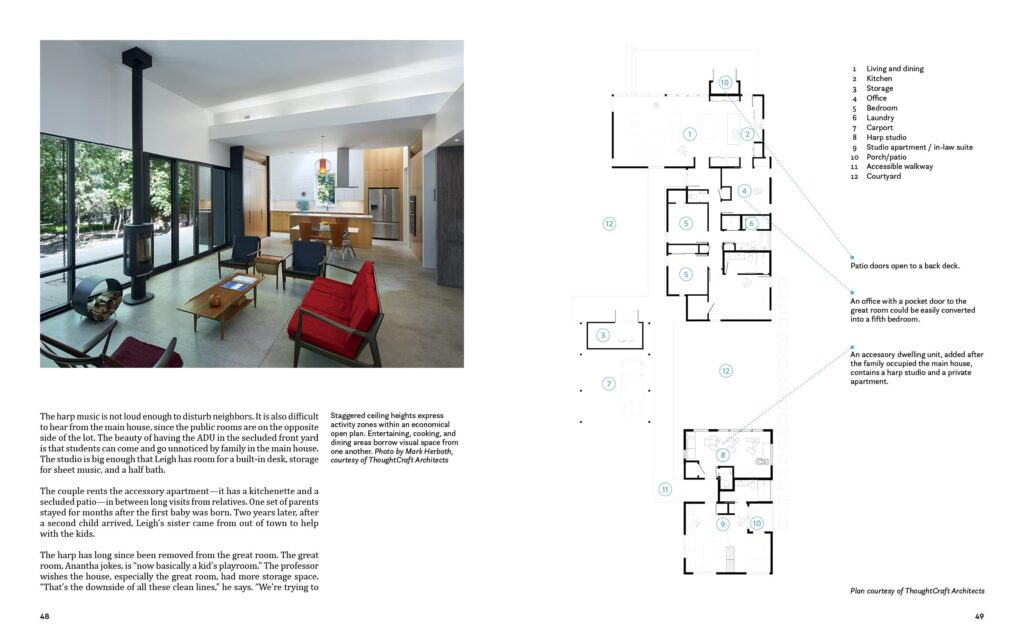I’m still blushing over the reviews my new book, The Forever Home, has received on Amazon since its late March debut. Readers have a lot of good things to say about the book, which took me three years to write. The book is based on three dozen interviews with homeowners and architects done during the pandemic when people seem condemned to live in their homes forever. 🙂
I’m particularly grateful that reviewers appreciate the book’s straightforward tone. I’m always trying to write accessible prose rather than archibabble. Too often prose dealing with architecture deliberately obfuscates, as if technical jargon makes the project more important. It just makes it harder to understand what the designer was actually trying to accomplish, which can often be explained in layman’s terms.
Reviewers also expressed admiration for the book’s high production values. I’m really lucky to be working for a publisher, Schiffer, who in this digital age still believes in using good paper and sweating print details. Schiffer reports that my books do well in bookstores where shoppers can open them, see the beautiful projects in all their glory, and read a bit about them. It’s hard to get the same experience online, even if some of the interior pages are reproduced.
I worked hard to obtain floor plans for each project and then explain the important elements of the plan to those who have trouble “reading” a floor plan. I packed the book with service sidebars — my J-school professors would be proud! — so that the book would include the basics needed to successfully build a new home or remodel an existing one. My favorite might be how to avoid buyer’s remorse. I thought that made sense to include because if owners are unhappy with their home they may quickly flip it.
Several reviewers favorably commented on the theme of the book — how to design and build a home that will last a generation or two. The theme works on two levels. First, people are more likely to have a longer and more satisfying experience living in a forever home. Building homes right the first time — with floor plans flexible enough to evolve as lifestyles change — reduces their carbon footprint. In a way, it’s the ultimate green statement.

Here’s some 0f what people are saying. “As one of the architects with a project featured in the book, I can speak to how well Boyce captured its essence and put it in a larger context. Unlike many writers, he does so without resorting to lingo or oversimplifications. The book is packed with useful examples and design ideas that I believe will stand the test of time and changing tastes. I have a pile of books next to my desk that I keep ‘meaning to read.’ The Forever Home is not one of them.”
“As a new homeowner, this book provides a wealth of ideas and opportunities to improve my current property. It is easy to understand the concepts and is relatable to an inexperienced designer such as me. The printing and image quality is top tier.”
“Beautiful but also useful. The homes he profiles (beautifully) offer solutions for lasting design. Most homes are purpose-built to the moment – and do not adapt well to changed circumstances. This book outlines design ideas that make a home timeless – integrating universal design principles as well as multigenerational living.”
“If you are thinking of building – or buying – or remodeling – a home, this book can be your gospel. Complete with many concrete examples and excellent pics, diagrams, and plenty of useful considerations – what to do, what to avoid, how to incorporate flexibility for changes. (It might even put you over the edge to your own effort for build your own lifetime nest.) Thoughtful, well composed, easy to follow and understand both the what and the why.”